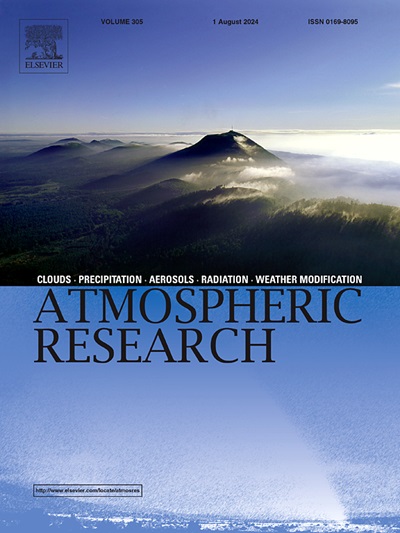A machine learning network for FY-3A MERSI NIR PWV retrieval under all-weather conditions
IF 4.5
2区 地球科学
Q1 METEOROLOGY & ATMOSPHERIC SCIENCES
引用次数: 0
Abstract
Accurate precipitable water vapor (PWV) monitoring is critical to understanding weather systems and predicting extreme meteorological events. The Moderate Resolution Spectral Imager (MERSI) onboard the Fengyun-3A (FY-3A) satellite provides PWV products with a spatial resolution of 1 km × 1 km. However, the MERSI PWV products contain a large amount of gross errors due to the stripe noise in the raw MERSI observations. Furthermore, the accuracy of MERSI PWV is also affected by weather conditions and land cover types. To address these limitations, we first applied Gaussian spatial filtering to the MERSI observations to attenuate the stripe noise and generate de-striped observations. Then, the MNPNet (MERSI NIR PWV retrieval Net) was developed based on random forest for the first time to retrieve PWV from the combination of GNSS PWV and MERSI near-infrared (NIR) atmospheric transmittance. The new nets well considered land cover types and weather conditions, and obtained amazing accuracy. The PWV derived from 256 GNSS stations in 2017 is used as a reference to validate the MNPNet PWV. The results show that root mean square errors (RMS) of the new net are 1.95 mm for clear weather, 2.68 mm for uncertain weather, 3.07 mm for cloudy weather, and 2.85 mm for all weather, which indicates improvements of 74 %, 78 %, 87 %, and 85 % over the original FY-3A/MERSI PWV. The validation results verify that the proposed algorithm has excellent performance and can markedly improve the all-weather PWV retrieval from FY-3A/MERSI. This study is essential for improving the utilization of MERSI data, weather forecasting, and climate research.
求助全文
约1分钟内获得全文
求助全文
来源期刊

Atmospheric Research
地学-气象与大气科学
CiteScore
9.40
自引率
10.90%
发文量
460
审稿时长
47 days
期刊介绍:
The journal publishes scientific papers (research papers, review articles, letters and notes) dealing with the part of the atmosphere where meteorological events occur. Attention is given to all processes extending from the earth surface to the tropopause, but special emphasis continues to be devoted to the physics of clouds, mesoscale meteorology and air pollution, i.e. atmospheric aerosols; microphysical processes; cloud dynamics and thermodynamics; numerical simulation, climatology, climate change and weather modification.
 求助内容:
求助内容: 应助结果提醒方式:
应助结果提醒方式:


